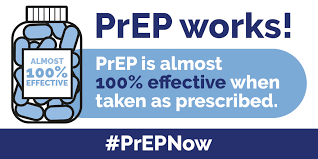Scaling Pre-exposure Prophylaxis (PrEP) Programs in Health Settings – My 10Ps

Another pre-exposure prophylaxis (PrEP) anniversary is upon us, marking 12 years since the first FDA approval of PrEP. While the results have been mixed across states and populations, many community health centers still face challenges in scaling their PrEP programs.
Between 2016 and 2018, my team and I launched our agency’s first PrEP program, growing it to serve over 200 clients within a robust HIV prevention framework. This short article will remind and equip health settings, community health centers (CHCs), hospitals among others with simple steps to achieve remarkable program results.
Let’s call it the “10 Ps to Scale PrEP Programs”across the U.S. and worldwide:
- PrEP Policy:
I must admit, early in my career, I was skeptical about policies. They seemed more of a burden than a help. But, I learned that establishing a PrEP policy is crucial. The Indian Health Service provides a simple template: https://www.ihs.gov/sites/hivaids/themes/responsive2017/display_objects/documents/nursehivpreppolicy.pdf. Policies and procedures ensure the process is inclusive, identify key populations or groups, involving cross-departmental input, senior leadership, partners and providers among others have their roles and responsibilities clearly stated.
2. PrEP SOP (Standard Operating Procedures):
I love SOPs. They serve as a roadmap for staff and clients. For visual learners like myself, a workflow graphic can bring these to life. See a COVID-19 example from U.S. Centers for Disease Prevention and Control (CDC): https://www.cdc.gov/coronavirus/2019-ncov/hcp/non-us-settings/sop-triage-prevent-transmission.html
3. PrEP Measures:
Many agencies fail to set PrEP measures and targets. Without these, EHR systems can’t create effective PrEP templates. Setting these measures helps in creating templates and keeps medical and non-medical staff aligned with the program’s needs. NYC DoHMH offers resources that, though dated, provide valuable insights: https://etedashboardny.org/wp-content/uploads/2021/09/2.-PrEP-Measurement-in-NYC.pdf. (Please drop a comment with the link to the most recent document). Have you modified your EHR for PrEP? This step also informs staff report templates, job descriptions, huddles, QI meetings, and more.
4. PrEP Navigators/Staff:
Never start a PrEP program without clearly defining job functions, whether you have dedicated staff or multitasking team members.
5. POC HIV Test Kits:
Point of care rapid HIV test kits (4th gen) support swift PrEP initiation. Relying solely on lab results delays PrEP initiation, increases HIV infection risk, and frustrates clients. Many programs offer free rapid test kits (link to Greaterthan.org), or contact your local health department. If you can’t access free kits, consider partnerships with other agencies. I used this strategy in the past and it worked better than I could have imagined. See sample of PrEP screening tool from Washingston State Department of Health: https://doh.wa.gov/sites/default/files/2022-12/150-180-PreExposureProphylaxisSelfScreeningFormPIPAR.pdf
6. Partnerships:
Partnerships are fundamental to scaling PrEP programs. Whether it’s accessing free rapid test kits or connecting community partners with PrEP resources, partnerships are crucial. In NYC, no established PrEP program exists without them. It takes a community to make PrEP known. Period!
7. Providers:
CHC primary care providers can manage PrEP programs; no HIV specialists are necessary, although their presence can enhance success. Historically, PCPs referred PrEP cases to specialists, but that’s no longer common practice.
8. Payment Options:
Address payment options upfront to prevent surprises for clients. Check out HIV.gov program: Ready, Set, PrEP: https://readysetprep.hiv.gov/ for medication assistance programs. In NYC, some clients paid $0, while others paid $20. In the Caribbean, health departments offer PrEP medication for free to certain populations. These models all work to make PREP more accessible, reach people who are at risk and break down barriers to care. You have our support!
9. Pharmacy:
Collaborate closely with pharmacies to ensure clients can access their medication. We had three go-to pharmacies, understanding their processes and knowing which clients (with or without insurance) would get the best results. These partnerships come with perks.
10. PrEP QI Huddles:
I love huddles. My team will attest to it. These 10-15 minute huddles keep your finger on the pulse of the program. Structured weekly or bi-weekly, they help incorporate PrEP QI activities, significantly advancing your scaling targets. (I will have a free QI template in my next blog – hold me to that (big smile))!
While there’s much more to unpack within these 10 Ps, I hope this serves as a valuable guide. If you’re interested, we can dive deeper into each one. I cheer you on to be visionaries for your PrEP program. Drop a comment.
